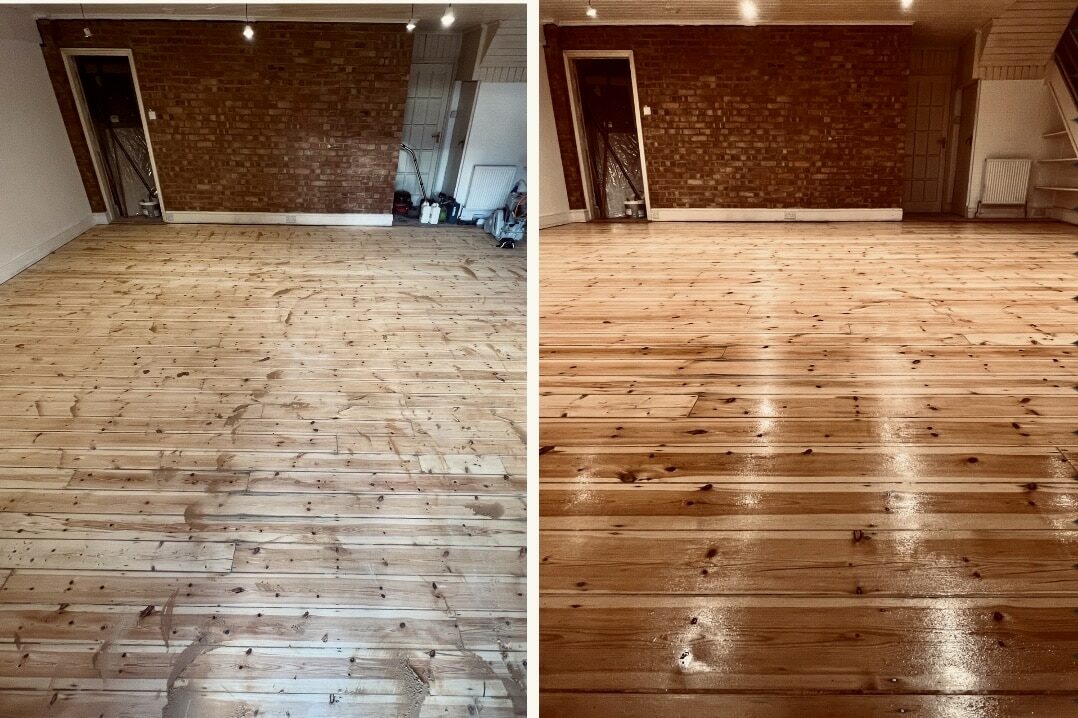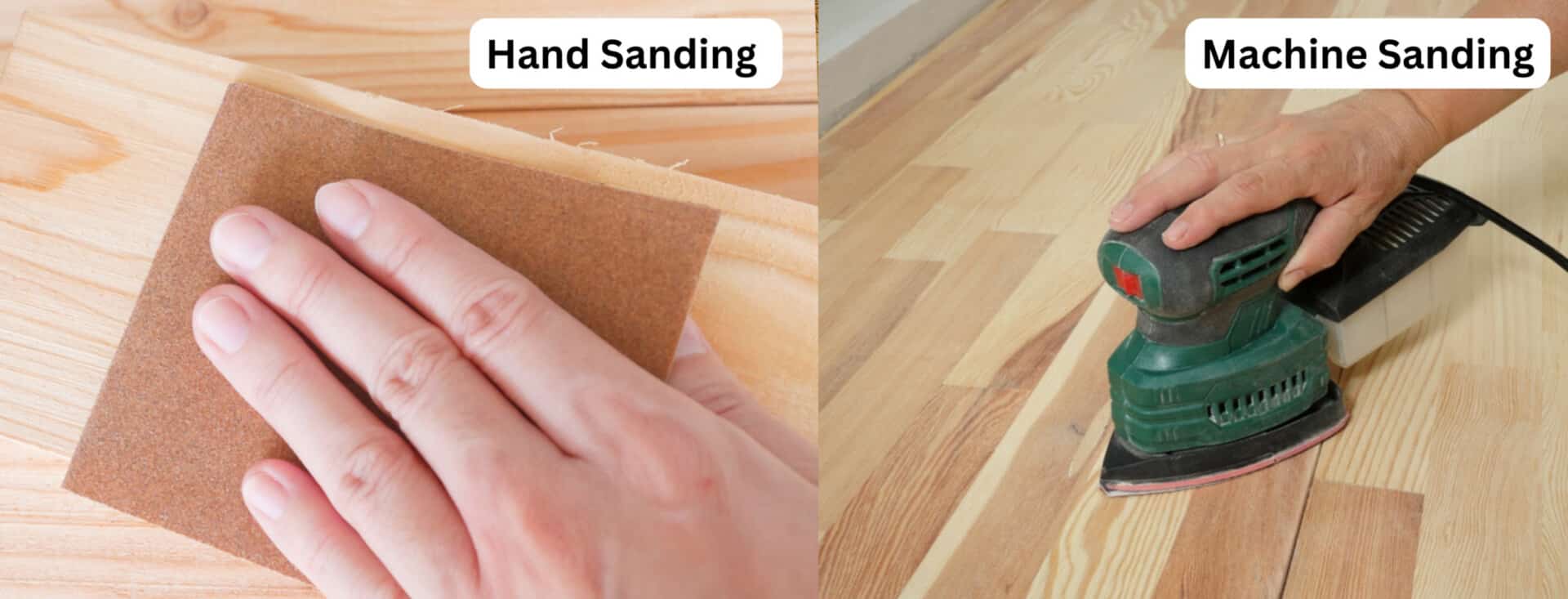London:
Nationwide:
The Different Types of Buffing Pads and Their Uses
Posted on October 22, 2023
Buffing
The Comprehensive Guide to Buffing Pads: Types, Uses, and Maintenance
In the world of automotive detailing and surface finishing, the tools of the trade are just as important as the skills and techniques employed. Among these tools, Wood Floor buffing pads hold a place of prominence, playing a crucial role in achieving that perfect shine and smooth finish. In this guide, we delve into the different types of buffing pads available on the market, exploring their unique characteristics, materials, and intended applications. From wool pads known for their aggressive cutting abilities to foam pads offering varying levels of abrasiveness and microfiber pads that provide a balance between cutting and finishing, each type of pad serves a specific purpose. Understanding these differences is key to selecting the right pad for the job, ensuring the best results and prolonging the life of both the pads and the surfaces they are used on.
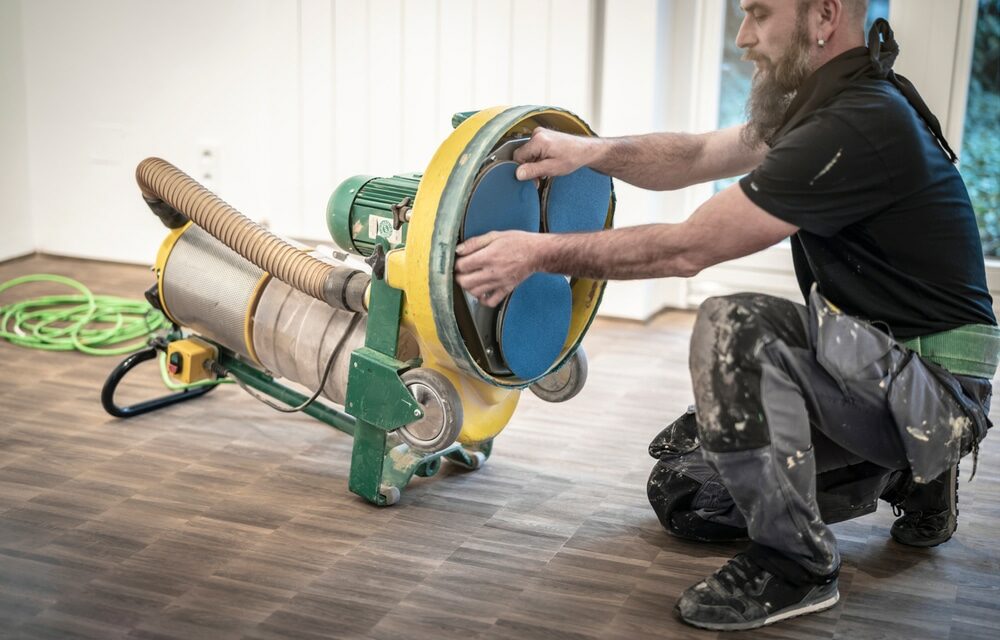
Buffing and polishing are integral steps in the detailing process, whether it’s for cars, boats, or any other surface requiring a flawless finish. The choice of buffing pad plays a pivotal role in determining the outcome of these processes, making it essential for professionals and enthusiasts alike to have a comprehensive understanding of the different types of buffing pads available. In this comprehensive guide, we will unravel the complexities of buffing pads, categorising them based on their materials, levels of aggressiveness, and most suitable applications. From understanding the quick cutting action of wool pads to exploring the versatile range of foam pads and the precision of microfiber pads, this article aims to provide readers with the knowledge needed to make informed decisions and achieve impeccable results in their buffing and polishing endeavours.
Achieving a lustrous finish on any surface requires not just skill and patience but also the right tools. In the domain of surface preparation and finishing, buffing pads are indispensable, offering a variety of options tailored to different needs and outcomes. This guide serves as a comprehensive introduction to the different types of buffing pads, outlining their distinct characteristics, materials, and appropriate uses. Whether it’s the aggressive cutting power of wool pads, the diverse range of foam pads, or the fine finishing capabilities of microfiber pads, each has its own place in the toolkit of a detailer. By dissecting the nuances of each type, this article aims to empower users with the knowledge to choose the right pad for their specific task, ensuring efficiency, effectiveness, and a flawless finish.
Foam Buffing Pads
Foam buffing pads are an essential component in the detailing and finishing industries, offering a versatile range of applications based on their density, size, and structure. These pads are crucial for applying polishes, waxes, and sealants, as well as for conducting paint correction tasks. They are designed to work in conjunction with both rotary and dual-action polishers, providing users with the ability to achieve a flawless finish on a variety of surfaces. Below, we explore the three main types of foam buffing pads—soft, medium, and firm—each serving specific purposes and yielding different results.
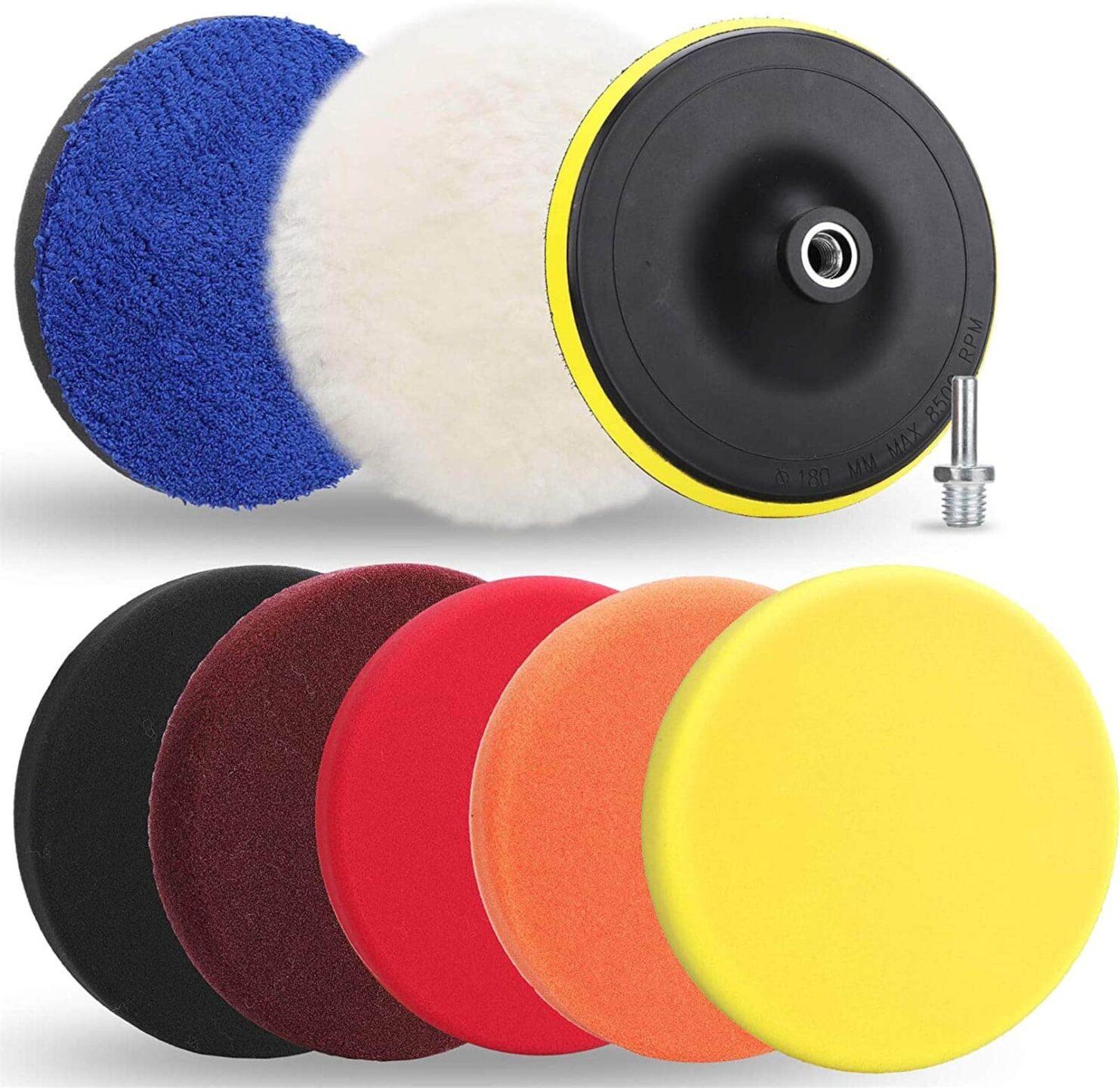
1. Soft Foam Pads
Soft foam pads are characterised by their plush, delicate structure, making them the perfect tool for applying final waxes, sealants, and glazes. These pads have low cutting power, ensuring that they do not induce any additional scratches or swirls on the surface. They are ideal for bringing out maximum gloss and clarity, especially after the paint correction stage. Soft foam pads work exceptionally well on delicate surfaces and are often the go-to choice for enthusiasts and professionals aiming for a show-car finish.
2. Medium Foam Pads
Medium foam pads strike a balance between cutting power and finishing ability, making them a versatile option for a wide array of applications. These pads are generally used for light to moderate paint correction and are capable of removing light swirls, scratches, and oxidation. They can also be employed for applying polishes and cleaner waxes. Medium foam pads are a popular choice for routine maintenance detailing, as they provide enough corrective power without being overly aggressive.
3. Firm Foam Pads
Firm foam pads are designed for more aggressive paint correction tasks. These pads have a denser structure, providing more cutting power to effectively remove deeper scratches, swirls, and oxidation. They are commonly used in the initial stages of a multi-step detailing process, where significant paint correction is required. Despite their aggressive nature, when used correctly and with the appropriate compounds, firm foam pads can still provide a smooth finish, although a follow-up with a softer pad is usually recommended to achieve the ultimate shine. They are an invaluable tool for restoring neglected or heavily oxidised surfaces to a like-new condition.
Wool Buffing Pads
Wool buffing pads are known for their superior cutting ability and are primarily used for heavy-duty paint correction tasks. These pads are typically constructed from natural or synthetic wool fibres, each type offering unique advantages and characteristics. Wool pads are often preferred for their ability to remove significant paint imperfections, oxidation, and scratches quickly. They are generally used with rotary polishers due to their aggressive nature, and proper technique is crucial to prevent damage to the surface. In this section, we will explore the nuances of natural wool pads and synthetic wool pads, helping you understand their specific applications and advantages.
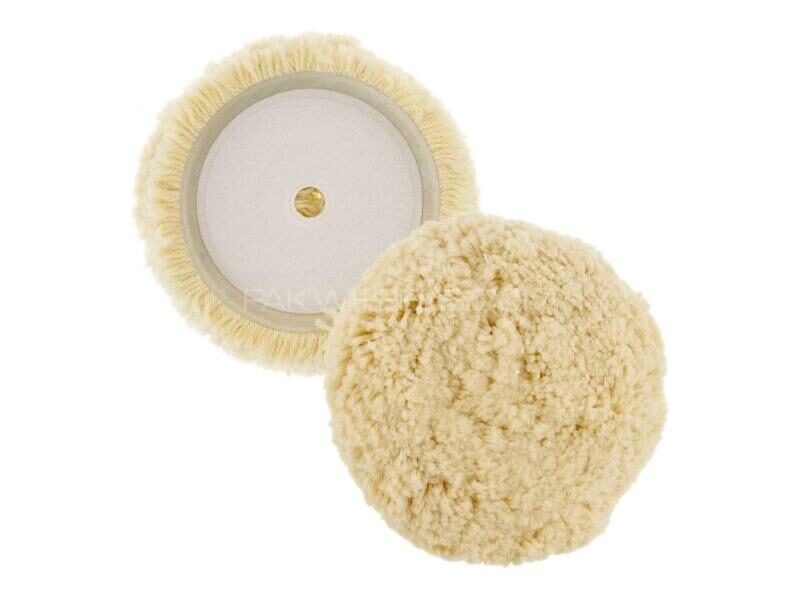
1. Natural Wool Pads
Natural wool pads are made from genuine wool fibres and are renowned for their aggressive cutting power. These pads are ideal for quickly removing heavy oxidation, deep scratches, and paint defects. The dense and erratic fibres of natural wool create a random pattern, which helps minimise swirl marks during the compounding process. However, due to their aggressive nature, natural wool pads can sometimes leave behind a hazy or dull finish, requiring follow-up with a softer pad and finer polish to restore gloss. These pads are an excellent choice for professionals working on severely neglected or damaged finishes where rapid material removal is a priority.
2. Synthetic Wool Pads
Synthetic wool pads, on the other hand, are manufactured from man-made fibres that mimic the structure of natural wool. While they offer a similar level of cutting power, synthetic wool pads tend to be more durable and consistent in their performance over time. These pads are less prone to matting and easier to clean, making them a more practical choice for frequent use. They are also slightly less aggressive than natural wool pads, providing a bit more control and reducing the risk of causing damage to the paint. Synthetic wool pads are a popular choice for both professional detailers and enthusiasts who require the cutting power of wool but prefer a more user-friendly and durable option.
Both natural and synthetic wool pads play a crucial role in paint correction and detailing, offering the aggressive cutting power needed to tackle the toughest jobs. Understanding the characteristics and best practices for each type ensures optimal results and the preservation of surface integrity.
Microfiber Buffing Pads
Microfiber buffing pads have gained popularity in the detailing world due to their unique combination of cutting power and finishing ability. Constructed from a blend of polyester and polyamide fibres, these pads provide a level of abrasiveness that falls between foam and wool pads, making them incredibly versatile. The microfiber material allows for an even distribution of polish or compound, ensuring consistent results across the entire surface. These pads are suitable for both dual-action and rotary polishers, and they come in various pile heights and densities to cater to different detailing needs.
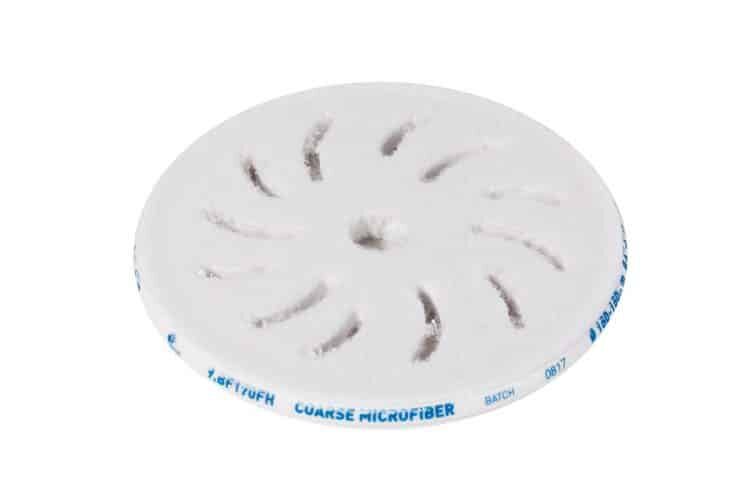
Characteristics and Applications:
The dense composition of microfiber pads provides enough cutting power to address moderate paint imperfections, such as light scratches, swirl marks, and oxidation. At the same time, the soft nature of the microfiber material ensures a fine finish, often eliminating the need for a follow-up polishing step. Microfiber pads excel in situations where a balance between cutting power and finishing ability is required, making them a favourite choice for one-step polishing processes. To achieve optimal results, it is important to keep these pads clean and free from debris, as the microfiber material can become clogged with polish residue.
Hybrid Buffing Pads
Hybrid buffing pads represent an innovative approach to surface finishing, combining different materials and technologies to create pads that offer unique advantages. These pads often integrate foam, microfiber, and sometimes even wool materials into a single design, aiming to harness the strengths of each component.
Characteristics and Applications:
The design of hybrid pads can vary significantly, with some featuring a foam base topped with a microfiber or wool face, while others might incorporate layers of different materials. The goal is to provide a pad that delivers both aggressive cutting power and a fine finish, potentially reducing the number of steps required in the detailing process. For instance, a hybrid pad with a foam core and microfiber face might provide the mechanical cutting action needed to address paint imperfections, while the foam component offers a cushioning effect, contributing to a glossy finish.
Hybrid pads are suitable for a variety of applications, from paint correction to final polishing, depending on their specific design and material composition. They are particularly beneficial for detailers looking to maximise efficiency without sacrificing results. Like with other types of pads, proper care and maintenance are essential to ensuring the longevity and performance of hybrid buffing pads.
Specialty Buffing Pads
While the more common types of Wood Floor buffing pads are designed for paint correction and finishing on automotive surfaces, specialty pads are also crafted for specific applications beyond the paint. These pads are designed with unique materials and textures to cater to the distinct needs of different surfaces, such as glass, metal, and tires. Understanding the purpose and proper use of these specialty pads is essential for achieving optimal results and maintaining the integrity of the surfaces being worked on.

1. Glass Polishing Pads
Glass polishing pads are designed specifically for automotive glass surfaces. These pads are typically made from a smooth, fine material that is gentle enough to prevent scratching the glass but abrasive enough to remove water spots, light scratches, and other imperfections. Often, glass polishing pads are used with specialised glass polishes that are formulated to break down contaminants and imperfections on the glass surface. Using the correct technique and product combination, these pads can restore clarity and shine to automotive windows and mirrors without causing damage.
2. Metal Polishing Pads
Metal surfaces, whether they be chrome, aluminium, or stainless steel, require a different approach when it comes to polishing. Metal polishing pads are crafted from materials that can handle the demands of metal surfaces, often being more robust and abrasive than pads designed for paint or glass. These pads are used to remove oxidation, stains, and tarnish from metal parts, restoring their shine and protection. Some metal polishing pads are even designed for use on exhaust tips and other high-temperature areas, demonstrating their durability and effectiveness in challenging conditions.
3. Tyre Buffing Pads
Tyre buffing pads serve a unique purpose in the detailing world, focusing on preparing the tyre surface for the application of dressings or sealants. These pads are usually made from a tougher material capable of scrubbing away old dressings, dirt, and contaminants from the tyre’s rubber surface. Properly preparing the tyre with a buffing pad ensures that tyre dressings adhere properly and last longer, maintaining the tyre’s appearance and protection over time. Additionally, using a tyre buffing pad can help to rejuvenate the rubber, restoring its colour and texture.
Each type of specialty buffing pad is designed with a specific application in mind, ensuring that whether you are working on glass, metal, or tyres, you have the right tool for the job. Proper use of these pads, in conjunction with the appropriate products, guarantees optimal results and contributes to the overall aesthetic and protection of the vehicle.
Selecting the Right Buffing Pad
Choosing the correct buffing pad is a critical decision in the detailing process, as it can significantly impact the outcome of your work. The right pad ensures efficiency in paint correction and finishing, while the wrong choice can lead to unsatisfactory results or even damage to the surface. In this section, we will explore the key considerations when selecting a buffing pad, focusing on understanding pad aggressiveness, matching the pad to the polish or compound, and considering the surface material.
1. Understanding Pad Aggressiveness
Buffing pads come in various levels of aggressiveness, ranging from heavy-cutting wool pads to ultra-soft foam finishing pads. Understanding the level of aggressiveness required for the task at hand is crucial. Heavy cutting pads are ideal for removing deep scratches, oxidation, and other significant paint defects but can leave behind haze or marring that needs to be refined with a softer pad. On the other hand, finishing pads are designed to maximise gloss and clarity but may not have the cutting power to remove imperfections. Assessing the condition of the surface and the desired outcome will guide you in choosing a pad with the appropriate level of aggressiveness.
2. Match the pad to the polish or compound
The performance of a buffing pad is also influenced by the polish or compound it is used with. Manufacturers often provide recommendations for pairing pads with specific products to achieve optimal results. Heavy cutting compounds typically require pads with more cutting power, such as wool or firm foam pads. Finishing polishes, on the other hand, perform best with softer foam or microfiber pads. Ensuring compatibility between the pad and the product not only enhances the effectiveness of the process but also reduces the risk of damage to the surface.
3. Consider the Surface Material
Different surfaces require different care. Automotive paint, glass, metal, and rubber each have unique characteristics that necessitate specific types of pads. For instance, glass polishing pads are specially designed for automotive glass and should be used to avoid scratches and achieve a clear finish. Similarly, metal surfaces may require a more robust pad to effectively polish and remove oxidation. Understanding the material you are working on and selecting a pad designed for that specific surface ensures safe and effective detailing.
Selecting the right buffing pad is a nuanced decision that requires consideration of the pad’s aggressiveness, compatibility with polishes or compounds, and suitability for the surface material. By taking the time to make an informed choice, you ensure not only the success of your detailing project but also the longevity and appearance of the surface you are working on.
Maintenance and Care of Buffing Pads
Proper maintenance and care of Wood Floor buffing pads are essential to ensuring their longevity and optimal performance. Regular cleaning and proper storage play crucial roles in preserving the condition of your pads, preventing contamination, and ensuring that they deliver consistent results. Below are some guidelines on how to maintain and care for your buffing pads:
1. Cleaning After Each Use
It’s crucial to clean your buffing pads immediately after each use to remove any product residue, paint particles, or contaminants. Allowing these substances to dry on the pad can lead to the hardening of the fibres or foam, reducing the effectiveness of the pad and potentially causing damage to surfaces in future uses.
- Foam Pads: Rinse thoroughly with water and use a pad cleaning solution if available. Gently massage the pad to break down and remove polish or compound residues. Rinse again and squeeze out any excess water.
- Wool and Microfiber Pads: These may require a more vigorous cleaning method. Use a pad spur for wool pads to remove caked-on product and fluff the fibers. For microfiber pads, a pad brush can be used to agitate and lift out the residues. Follow up with a rinse and a suitable cleaning solution.
2. Air drying
After cleaning, lay the pads flat or hang them to air dry completely before storing or reusing. Ensure they are kept in a cool, dry place away from direct sunlight. Never use a pad that is damp, as this can affect the performance and spread contaminants.
3. Avoiding Cross-Contamination
Dedicate specific pads to specific types of products to avoid cross-contamination. For example, do not use the same pad for applying compound and then a finishing polish. Labelling your pads or using a colour-coded system can help in organising and preventing mix-ups.
4. Proper Storage
Store your pads in a clean, dust-free environment. You can use sealable bags or containers to protect them from dust and contaminants when they are not in use. Ensure the pads are completely dry before storing to prevent mould or mildew formation.
5. Regular Inspection
Before each use, inspect your pads for any signs of wear, tear, or contamination. If a pad is damaged or overly worn, it’s best to replace it to ensure the safety and effectiveness of your detailing process.
6. Using Pad Conditioning Brushes
Pad conditioning brushes can be used during the detailing process to remove buildup and maintain the pad’s performance. These brushes can help to fluff up fibres on wool pads and remove excess product from foam and microfiber pads.
By following these maintenance and care tips, you can extend the life of your buffing pads, ensure their peak performance, and achieve the best possible results in your detailing endeavors. Remember that the care you put into maintaining your tools reflects the quality of your workmanship and contributes to the overall success of your detailing projects.
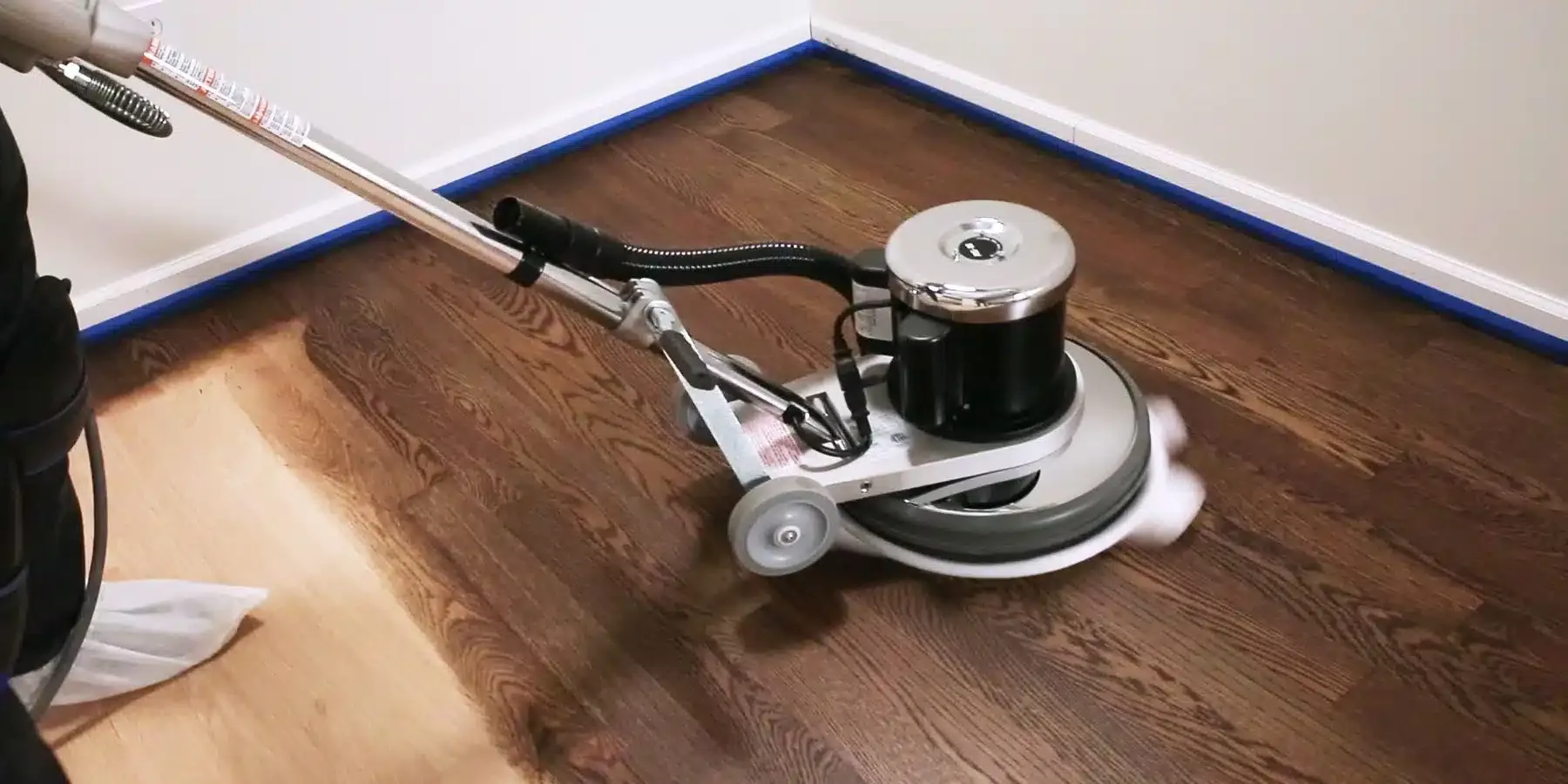
Conclusion
In conclusion, the world of Wood Floor buffing pads is vast and diverse, offering a wide range of options tailored to different applications, surface materials, and desired outcomes. From the cutting power of wool and microfiber pads to the fine finishing abilities of foam pads and the innovative designs of hybrid and specialty pads, there is a buffing pad suited for every detailing challenge.
Understanding the nuances of each type of pad, including their levels of aggressiveness, material composition, and intended use, is crucial for selecting the right tool for the job. Moreover, aligning the pad with the appropriate polish or compound and taking into consideration the material being worked on ensures optimal results and protects the surface from potential damage.
Maintenance and care of buffing pads cannot be overstated, as regular cleaning, proper storage, and routine inspection extend the lifespan of the pads and maintain their performance. By investing time in selecting the right pad and committing to its upkeep, detailers can achieve impeccable finishes, efficiently tackle a range of surface imperfections, and elevate the overall aesthetic of the vehicles they work on.
In the end, the mastery of buffing pads and their applications is a testament to the detailer’s skill and dedication to their craft. Whether you are a professional detailer or an enthusiastic DIYer, understanding and respecting the tools of the trade is key to unlocking the full potential of your detailing endeavours.

Sanding
We provide virtually dust-free sanding with our continuous belt machinery with mobile extraction units, giving you a safer environment for your family.
Oiling
This organic finish not only adds beauty to your home but also has exceptional water-repellent characteristics, making it easier to clean and maintain.
Waxing
This natural floor finish offers the softest and most mellow appearance – and leaves your floor able to breath.
Buffing
Using soft buffing machines (and hand-polishing where required) will bring a wonderful sheen to your newly-finished floor.
Repairs
We offer a full assessment of your wooden floors to determine what repairs are needed to provide the perfect working surface for the later stages of sanding, staining and sealing.
Restoration
We offer a comprehensive restoration process designed to address floors that are improperly fitted or damaged over time through wear and tear.
Request a fixed price quote for your wood floor restoration now
Simply enter your postcode below to get started.
Services
Wood Floor Sanding Wood Floor Restoration Wood Floor Scratch Repair Squeaky Wood Floor Repair Parquet Floor Sanding Parquet Floor Restoration Commercial Floor Sanding Church Floor Sanding Community Centre Floor Sanding School Floor Sanding Gap Filling Gap Filling with ResinCopyright © Mr Sander®
Privacy & Cookies Terms & Conditions Complaints Procedure Cancellation Rights Sitemap
